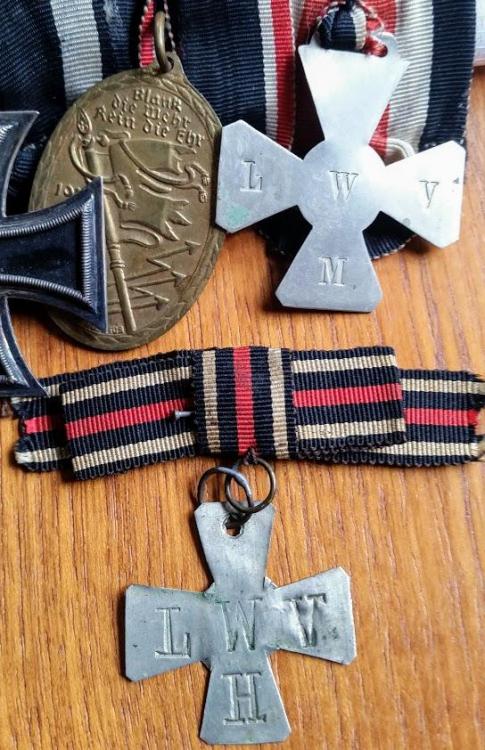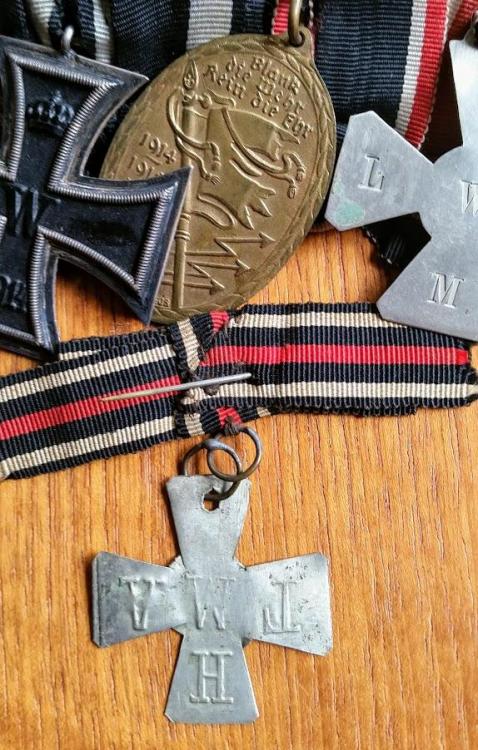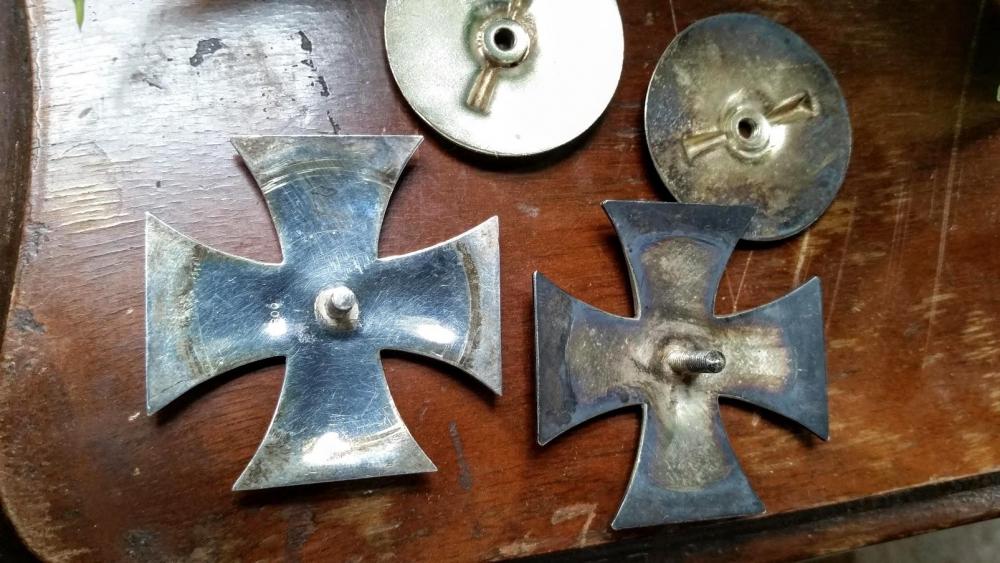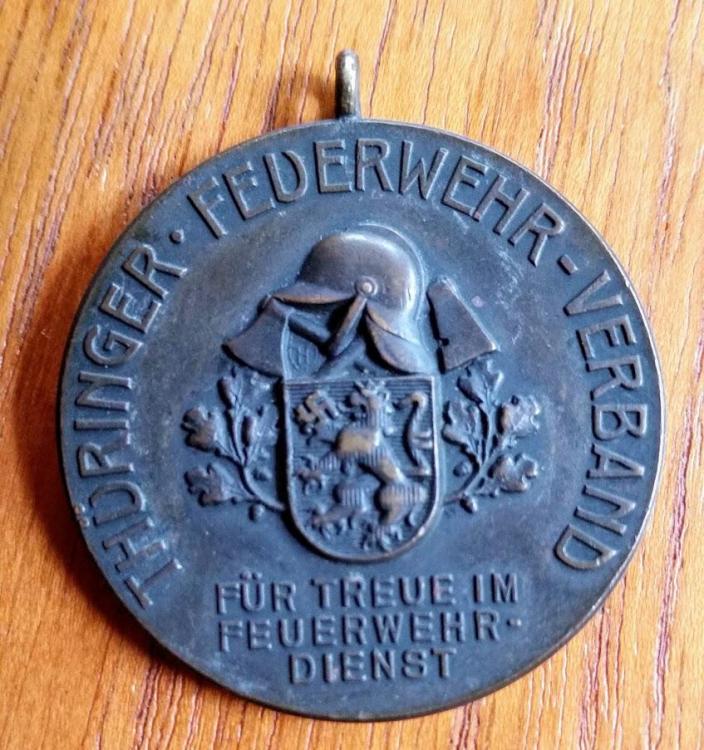-
Posts
2,551 -
Joined
-
Days Won
5
Content Type
Profiles
Forums
Blogs
Gallery
Events
Store
Everything posted by Eric Stahlhut
-
solomon, you may want to take another, closer, look at the cross charles has shown. there are signs of the planchet having been cast. i hope to be mistaken but it certainly appears to be the case... i liked the cross as a later private purchase piece until i noticed the above-mentioned red flag shown on the second and fifth pictures of the cross (the sides of the cross arms)
-

3rd reich tradition badge
Eric Stahlhut replied to Eric Stahlhut's topic in State, Civil Awards & Decorations
thank you, gentlemen -

Propaganda IC 2nd class 1914 ?!
Eric Stahlhut replied to Solomon's topic in Germany: All Eras: The Iron Cross
i agree with chris, looks about right for an ersatz ek fom the mid-80s -

K. A. G. - maker of Iron crosses from Bratislava?
Eric Stahlhut replied to kasle's topic in Germany: All Eras: The Iron Cross
sascha, thank you for revisiting this thread. i pulled out the above-mentioned book by K.N. and ran the pertinent pages through google's translate app--whilst the translation proved to be rudimentary at best i found no actual mention of a specific maker (especially one from present day slovakia), but he does mention the eisenbahn zentralamt, etc etc. most of the text addresses technical aspects regarding the various types from this maker. and he thinks these crosses could be early issued crosses that were available well into the 1920s -
wow, what a nice grouping! it's interesting to note the absence of an ek1 considering what he got from bavaria i've seen a few crosses like his; in the past i've always entertained the slight possibility that the non-enameled version of the cross in question could have been the same grade but with the enamel removed by the owner, but you have a photo of the non-enameled cross in wear! which establishes the fact that there were at least two classes of the cross in question. excellent! p.s. is there a date on the reverse of the photo? sometime between 1934-36 perhaps?
-
I don't think we have a thread that covers this obscure society, so i'm starting one now. not very much information seems to be readily available, which is a bit odd considering all of services they represented. engineers, railway troops, cyclists, radio and telegraphists, signal corps, airships, airplanes, even the pigeon troops.... and i've probably left out a few others! the union began in 1904 and lasted until 1936; what i find strange is that items such as flags, uniforms, or documents are so seldom found to the point of being non-existent. the medals and pins i'm showing below are of nicer quality from deschler and poellath. the top cross is by m. heimloth and is 800 silver marked. the crosses are large--while probably falling on the higher end of the price spectrum for these self purchased "vanity awards", this veteran's organization is often incorrectly referred to as a reservistenverein or as a weltkriegsteilnehmer bund by today's militaria dealers. if anyone has any further info or corrections to the above, please post!
-

Badischer Kriegerbund
Eric Stahlhut replied to Eric Stahlhut's topic in Germany: Weimar Republic & Deutsche Freikorps
hiya sascha, nice to see a post by you! unfortunately i have written that one off as "lost" along with several other very nice items. still makes me sad as they all seem to be pretty much impossible to replace...life goes on.... -

1914 EK1 screwback help needed
Eric Stahlhut replied to graham's topic in Germany: All Eras: The Iron Cross
no problem! the patent mark on your disc probably pertains to the threading nut incorporated into the disc, as it reduces the amount of separate pieces to the cross (less to misplace), and was most likely cheaper to produce. another unique characteristic of these crosses is the placement of the silver hallmark on the back frame of the cross itself--these marks are found close to the base of the thread post. the retaining disc is made of silvered brass here are a couple of examples from my collection to include in this thread -

1914 EK1 screwback help needed
Eric Stahlhut replied to graham's topic in Germany: All Eras: The Iron Cross
the illegible marking along the rim of the disc probably reads"victoria drgm". these are also found with partial markings such as "victoria" or "drgm" and also without any marks whatsover. the markings most likely pertain to the stamped attachment disc; it's a nice fairly seldom-encountered version of the 1914 ek1. -
i haven't been finding much of anything as of late, but i recently picked this up for $8. last issue before fire dept. awards were nationalized in 1936. magnetic. a link with info: http://www.feuerwehr-orden.de/rubriken/historisch/11005.html the team at weitze: https://www.weitze.net/militaria/05/III_Reich_Thueringer_Feuerwehr_Verband_Feuerwehr_Ehrenzeichen_1935__288905.html
-
i looked into this in order to attempt to find where exactly i read about the different ribbon widths but have not yet found the source. one thing that i immediately noticed is that the silver laurel leaf version appears to be far harder to find than the gilt version, which doesn't make sense if more of them were awarded; the gilt ones almost exclusively seem to come onto the market
-
the antique photos link you provided in your initial post mentions a first and second class; the photo of both grades shows the difference in ribbon size for each class. the first class had gilt oak leaves suspension for naval officers and civilian scientists, while the second class had a silver oak leaves suspension for crewmen. the gilt oak leaves suspension is smaller in width than the silver, and has a smaller ribbon. https://www.academia.edu/20385130/The_German_Atlantic_Meteor_Expedition_Medal_1925-27
-

MGSSA 10 EK1, Nivelle Offensive....
Eric Stahlhut replied to Chris Boonzaier's topic in Germany: All Eras: The Iron Cross
truly a field-repaired piece....thanks very much for showing it. unique piece of history you've got there! best,~e -

MGSSA 10 EK1, Nivelle Offensive....
Eric Stahlhut replied to Chris Boonzaier's topic in Germany: All Eras: The Iron Cross
i like these "front fighter" crosses and am always keen to see how the field repairs were done. if it's not too much of a hassle would it be possible to view the catch from a different angle? it's plausible that for many young men these self-engraved crosses served as a second dog tag


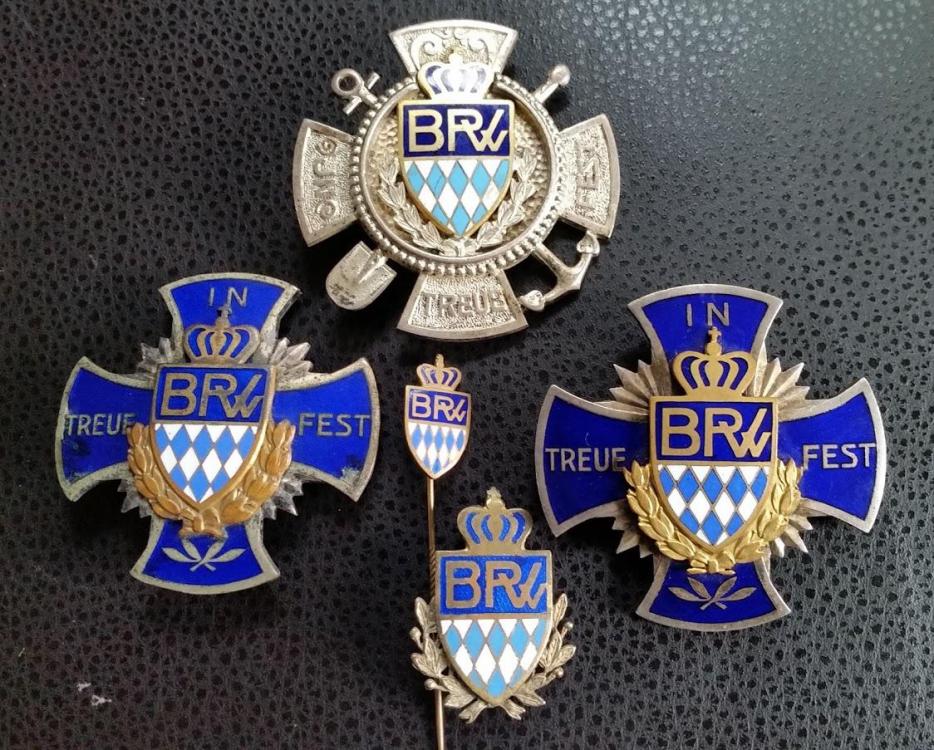
.thumb.jpg.4903df8077ca6783a0e7dc9efdf2ce69.jpg)
